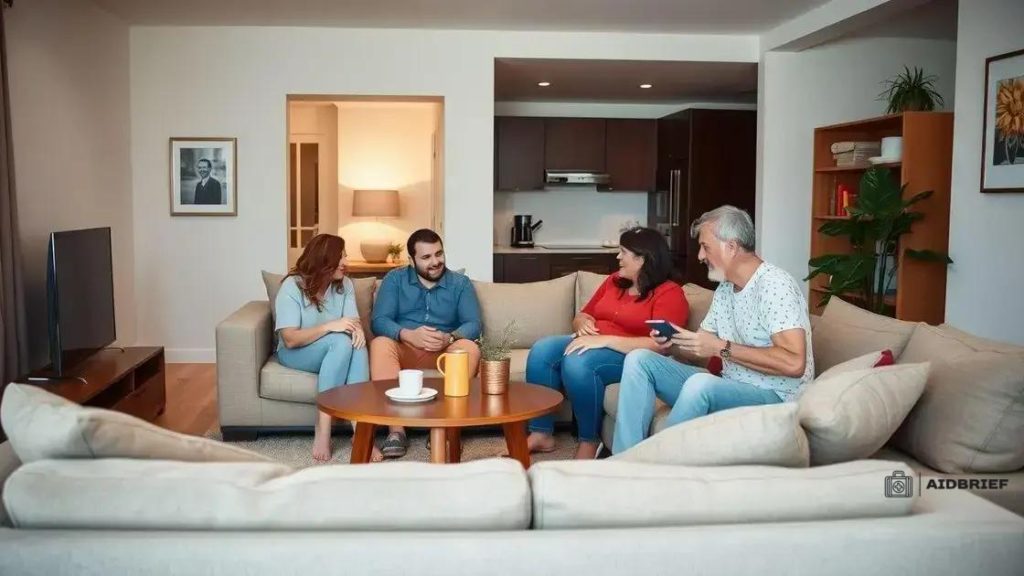Section 8 housing: Understanding benefits and eligibility

Section 8 housing is a federal program that assists low-income families by providing rental assistance, allowing them to pay a portion of their income towards housing while promoting stability and choice in safe residences.
Section 8 housing offers essential assistance for individuals and families facing housing challenges. Have you ever wondered how this program works and who can benefit? Let’s delve into its key aspects and eligibility.
What is section 8 housing?
Section 8 housing is a federal program designed to help low-income families, the elderly, and individuals with disabilities find affordable housing. It provides rental assistance to eligible participants, allowing them to pay only a portion of their income towards rent while the government pays the rest. This program plays a vital role in ensuring housing stability for those in need.
This assistance is available through Housing Choice Vouchers that can be used to rent apartments or homes from private landlords. It’s important to understand how this program works and who can benefit from it.
How does section 8 housing work?
When you qualify for Section 8 housing, you receive a voucher. This voucher allows you to find a place to live in the private rental market. The voucher covers a part of your rent, while you pay the remainder based on your income. Landlords who accept these vouchers are required to follow specific regulations to ensure the housing conditions are safe and healthy.
Eligibility criteria
To be eligible for Section 8 housing, applicants must meet certain criteria, which include:
- Income limits based on family size and local area median income.
- U.S. citizenship or eligible immigration status.
- Being a resident of the area where you are applying.
Each public housing agency (PHA) may have additional requirements, so it’s essential to check the specific guidelines for your local area.
Once you have your voucher, you can search for housing options. Remember, not all landlords accept Section 8 vouchers, but many do. Look for communities that are welcoming to voucher holders to increase your options.
Eligibility criteria for section 8 housing
Understanding the eligibility criteria for Section 8 housing is essential for anyone looking to benefit from this program. To qualify, applicants must meet specific guidelines set by local public housing agencies (PHAs). These criteria include income limits, residency requirements, and other considerations that may vary by location.
To be eligible, applicants generally need to have a total household income that falls below a certain threshold. This threshold is often based on the area median income (AMI). The lower your income is compared to the AMI, the better your chances of qualifying for the program.
Key eligibility requirements
Here are some of the main eligibility criteria for Section 8 housing:
- U.S. citizenship or eligible immigration status.
- Income limits: Your household income must be within the limits set by your local PHA.
- Eligibility based on family size: Larger families may have higher income limits.
Additionally, you will need to provide proof of your income and may undergo background checks. These checks typically verify whether applicants have been involved in any criminal activities or have previous evictions.
One of the main focuses of Section 8 housing is to assist vulnerable populations such as the elderly, disabled, and families with children. Each PHA may have additional specific requirements or preferences for applicants, so it is always a good idea to check with your local agency for precise guidelines.
Benefits of section 8 housing

The benefits of Section 8 housing are significant for low-income families and individuals. This program provides much-needed financial assistance, allowing renters to find housing that they can afford. By covering a portion of rent, Section 8 housing helps reduce the financial burden on families, making housing accessible and stable.
One of the most important benefits is that it offers flexibility in choosing where to live. Participants can use their vouchers to rent homes or apartments in various neighborhoods, which helps them find a place that suits their needs. This program encourages community integration, allowing families to settle in areas with better schools and job opportunities.
Financial assistance
Through Section 8 housing, eligible families often pay only 30% of their monthly income towards rent. This means that families can allocate more of their budget to necessities such as food, education, and healthcare. The balance of the rent is paid directly to the landlord by the housing authority.
Stability and security
Another major advantage is the stability that Section 8 housing offers. Many families can avoid the stress of frequent moves caused by rising rent prices. With the assistance provided, families can maintain their homes and build a secure environment for their children.
- Access to better neighborhoods with improved schools.
- Support for individuals with disabilities or elderly members.
- Long-term housing plans that promote security.
Additionally, this program is beneficial for landlords. By participating in Section 8 housing, landlords receive guaranteed rent payments and can fill vacancies quicker, leading to more stable rental income.
How to apply for section 8 housing
Applying for Section 8 housing can seem daunting, but understanding the process can help you navigate it more easily. First, it’s important to contact your local public housing agency (PHA) to find out if they are accepting applications. Each PHA operates independently, so their processes and waiting lists may differ.
Once you determine that applications are open, you will need to gather the necessary documentation. Common documents include proof of income, social security numbers for all household members, and identification. It’s crucial to have accurate and complete information to avoid delays.
Steps to apply
Here are the basic steps to follow when applying for Section 8 housing:
- Contact your local PHA to find out about the application process.
- Complete the application form accurately.
- Submit required documents, such as income verification and identification.
Once your application is submitted, it will be reviewed by the PHA. You may have to wait for a while, as many areas have long waiting lists due to high demand for affordable housing.
What to expect after applying
After you submit your application, it can take time for the PHA to process it. If selected, you will receive a voucher that allows you to look for housing. Remember, it’s essential to find a rental property that accepts Section 8 vouchers. This gives you flexibility in choosing a home that meets your needs.
Keep in mind that you can improve your chances by keeping track of your application status and communicating with your PHA if necessary. Staying informed is key to successfully applying for Section 8 housing.
Common misconceptions about section 8 housing
There are many misconceptions about Section 8 housing that can lead to confusion and stigma. Understanding the truth behind these myths is important for both potential renters and landlords. A common belief is that this program is only available for the homeless or those in extreme need. However, Section 8 is designed to assist low-income families, the elderly, and individuals with disabilities.
Another misconception is that all landlords refuse to accept Section 8 vouchers. In reality, many landlords participate in the program to ensure steady rental income. Properties available through Section 8 come in various types, including single-family homes and apartments, providing options for families of different sizes.
Common myths about section 8
Here are a few common myths:
- Myth 1: Section 8 tenants are irresponsible.
- Myth 2: The program promotes dependency on government assistance.
- Myth 3: Section 8 housing is of low quality.
In reality, participants in the program are often responsible tenants. They want stable housing and strive to maintain their homes. Regarding dependency, Section 8 actually helps families move towards self-sufficiency by reducing their housing costs.
Additionally, properties inspected by the program must meet safety and quality standards. Myth-busting these beliefs can help create a better understanding of Section 8 housing and the positive impact it has on communities.
In summary, Section 8 housing is a vital program that offers stability and support to low-income families and individuals. It helps them secure affordable places to live while combating common misconceptions about the program. By ensuring that eligible citizens can attain safe and quality housing, Section 8 plays an essential role in promoting community wellbeing. Understanding this program can lead to better acceptance and participation, which benefits everyone.
FAQ – Frequently Asked Questions about Section 8 Housing
Who qualifies for Section 8 housing?
Section 8 housing is available for low-income families, the elderly, and individuals with disabilities who meet specific income guidelines.
What types of housing can I rent with a Section 8 voucher?
With a Section 8 voucher, you can rent various types of homes including apartments, single-family houses, and townhomes, as long as the landlord accepts the voucher.
How can I find landlords who accept Section 8 vouchers?
You can ask your local public housing agency for a list of participating landlords or search online rental listings that specify acceptance of Section 8 vouchers.
What documents do I need to apply for Section 8 housing?
You will need to provide documents such as proof of income, social security numbers for household members, and identification when applying for Section 8 housing.





